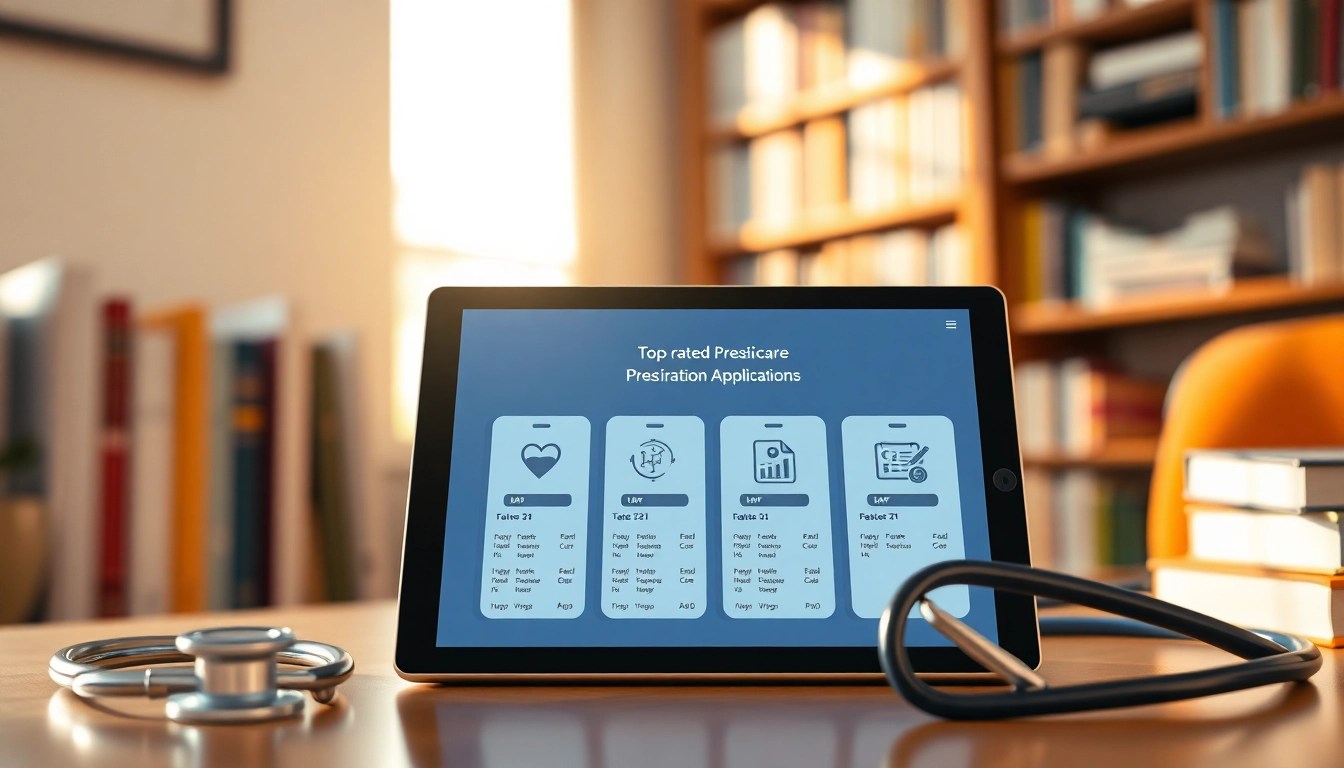
Understanding Eprescribing Software for Doctors
What is Eprescribing and Its Importance
Eprescribing, or electronic prescribing, is the digital process through which healthcare providers transmit prescription information to pharmacies. This modern approach eliminates the need for handwritten prescriptions, reducing the risks of errors, improving patient safety, and enhancing efficiency in the healthcare delivery framework. By facilitating faster and more secure communication between doctors and pharmacies, eprescribing software for doctors becomes a fundamental component in modern medical practice.
The importance of eprescribing lies not only in its ability to streamline the prescribing process but also in its potential to improve patient outcomes. This includes reducing medication errors caused by illegible handwriting or misunderstood verbal instructions, enhancing patient adherence to therapeutic regimens, and enabling healthcare providers to monitor patient medication history with ease. As the healthcare industry continues to evolve, the role of eprescribing in facilitating effective communication and improving patient care grows increasingly critical.
Key Features of Eprescribing Software
Understanding the essential features of eprescribing software is critical for physicians seeking to implement or upgrade their systems. Key functionalities include:
- User-Friendly Interface: A straightforward and intuitive interface ensures that healthcare providers can quickly learn to use the software without extensive training.
- Medication Database Access: Comprehensive databases provide real-time information on medications, allowing physicians to access essential details such as dosing, indications, and potential drug interactions.
- Drug Interaction Alerts: Automated alerts regarding possible adverse drug interactions help clinicians make informed prescribing decisions.
- Prescription History Tracking: Enables physicians to view a patient’s previous medications and therapies, ensuring continuity of care.
- Support for EPCS (Electronic Prescribing for Controlled Substances): Compliance with EPCS regulations ensures secure transmission of prescriptions for controlled substances.
- Integration Capabilities: Ability to seamlessly integrate with existing Electronic Health Record (EHR) systems and practice management tools.
Benefits for Doctors and Patients
The advantages of utilizing eprescribing software extend beyond efficiency; they touch upon numerous aspects of patient care and practice management:
For Doctors:
- Increased Efficiency: Eprescribing speeds up the prescribing process, allowing physicians to spend more time with patients and less time managing paperwork.
- Enhanced Documentation: Digital records reduce the likelihood of errors and make it easier to track and manage prescriptions.
- Better Communication: Direct communication with pharmacies diminishes delays in order fulfillment.
- Regulatory Compliance: Meeting mandates for secure electronic prescribing reduces legal risks associated with prescription management.
For Patients:
- Improved Access to Medications: Patients receive their medications faster without the hassle of physical prescriptions.
- Reduced Errors: Minimizing errors associated with handwriting improves patient safety.
- Easier Refills: Patients can request refills electronically without needing to visit their physician’s office.
- Enhanced Involvement: Patients are more informed about their treatment plans and can manage their medications effectively.
Choosing the Right Eprescribing Software for Doctors
Evaluating Features and Usability
When selecting eprescribing software, practitioners must focus on evaluating both features and usability. Consider the specific needs of your practice and how the software aligns with these requirements. Key factors include:
- Customization Options: Look for software that can be tailored to meet the unique needs of your practice.
- Scalability: Ensure that the software can grow with your practice and accommodate an expanding patient base.
- Mobile Accessibility: With increasing reliance on mobile devices, software that is accessible on smartphones and tablets may enhance workflow.
- Customer Support: Reliable provider support ensures any issues are addressed promptly, minimizing interruptions to practice operations.
Integration with Existing Healthcare Systems
The ability to integrate eprescribing software with existing EHR and practice management systems is crucial for seamless operations. Integration streamlines workflows by allowing data sharing between systems. Consider the following during evaluation:
- Compatibility: Verify that the eprescribing solution is compatible with your current systems to facilitate smooth integration.
- Data Migration: Understand how existing data will be transferred to the new system to prevent information loss.
- Interoperability Standards: Ensure that the software adheres to standards that promote data sharing across platforms and systems.
Cost Considerations and ROI
Cost is a significant factor when selecting eprescribing software. Evaluate both direct and indirect costs associated with implementation and ongoing usage. These factors can influence the return on investment (ROI):
- Subscription Costs: Understand the licensing model—whether a one-time payment, monthly fees, or a combination.
- Implementation Costs: Include training, integration, and setup costs when assessing your budget.
- Operational Cost Savings: Estimate time saved through efficiency improvements, which can lead to financial savings over time.
- Patient Retention: Improved patient satisfaction can result in better retention, boosting overall revenue.
Implementing Eprescribing Software in Practice
Step-by-Step Implementation Guide
A successful implementation of eprescribing software can be achieved by following a structured approach. Here’s a step-by-step guide:
- Conduct Needs Assessment: Evaluate the needs of your practice and identify what functionalities are essential.
- Select a Software Vendor: Choose a vendor whose product aligns with your requirements and budget.
- Plan for Integration: Work on integrating the new software with existing systems and prepare for data migration.
- Train Staff: Provide comprehensive training for all relevant staff members to ensure smooth adoption.
- Go Live: Implement the software systematically, gradually rolling out to minimize disruption.
- Monitor Usage: Track software utilization and gather feedback from users to identify areas for improvement.
Training Staff and Ensuring Adoption
Effective training is vital to ensure that staff become proficient with new eprescribing systems. To foster adoption:
- Offer Varied Training Formats: Use a blend of in-person training, online courses, and reference materials to cater to different learning styles.
- Conduct Periodic Refreshers: Schedule regular training updates or refreshers to keep staff up-to-date with any new features.
- Encourage Feedback: Create an open environment where staff can share their experiences and challenges with the software.
Monitoring and Optimizing Use
After implementation, continuous monitoring ensures the software is being used effectively. Key actions may include:
- Performance Metrics: Regularly analyze performance metrics to identify trends in efficiency and areas needing improvement.
- User Satisfaction Surveys: Gather feedback periodically to assess user satisfaction and make adjustments as needed.
- Software Updates: Stay informed about updates or new features that can further enhance software efficiency.
Challenges of Eprescribing Software for Doctors
Common Issues and Solutions
While the benefits of eprescribing software are significant, challenges may arise during its implementation and operation. Being aware of common issues and their solutions can facilitate a smoother experience:
- Resistance to Change: Staff may resist changes to established routines. Solution: Highlight the benefits of the new software and provide comprehensive training.
- Software Bugs or Glitches: Initial bugs can disrupt workflow. Solution: Work closely with the software vendor for quick fixes and support.
- Data Entry Errors: Mistakes in entering patient information can lead to errors. Solution: Use templates and automated prompts to guide input.
Regulatory Compliance and Security
As healthcare continues to digitize, compliance with regulatory standards becomes paramount. Key considerations include:
- HIPAA Compliance: Ensure that patients’ private information is protected in accordance with HIPAA regulations.
- Security Features: Implement robust security measures such as encryption and two-factor authentication to protect against data breaches.
- Regular Audits: Conduct periodic audits to ensure compliance with legislation and to pinpoint potential vulnerabilities.
Patient Acceptance and Education
Educating patients about the benefits of eprescribing can enhance acceptance and participation in their care. Effective strategies include:
- Informational Brochures: Provide brochures or printed materials that explain the benefits and processes of eprescribing.
- Direct Communication: Discuss with patients during appointments how eprescribing impacts their care positively.
- Patient Feedback Opportunities: Gather patient feedback to further improve the eprescribing experience.
The Future of Eprescribing Software for Doctors
Emerging Technologies and Trends
The realm of eprescribing is continually evolving, influenced by technological advancements and changing healthcare landscapes. Emerging trends include:
- Artificial Intelligence: AI integration can enhance decision-making processes and provide personalized recommendations based on patient data.
- Telemedicine Integration: As telehealth grows, eprescribing will continue to integrate with telemedicine platforms for seamless patient experiences.
- Data Analytics: Advanced analytics will provide insights into prescribing patterns, helping providers refine their practices based on behavioral data.
Impact on Healthcare Delivery
The integration of advanced eprescribing software is likely to transform healthcare delivery by improving communication between patients and providers. With enhanced data sharing and interoperability, healthcare teams will deliver more coordinated and streamlined patient care.
Vision for Enhanced Patient Experiences
The future of eprescribing holds promise for enhanced patient experiences, where medication management is more personalized and transparent. As healthcare systems embrace innovative technologies, patient engagement and satisfaction are expected to improve substantially.








